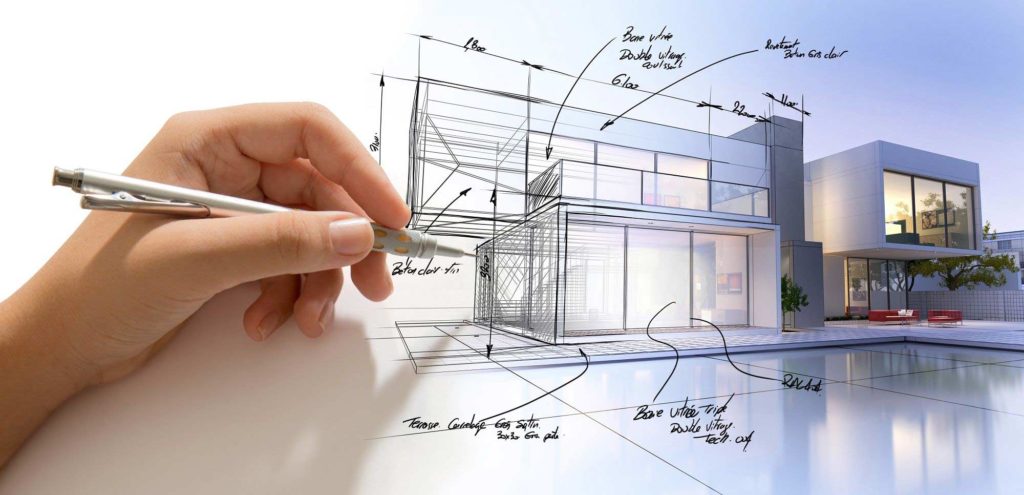Architect-Approved Home Remodeling Ideas
Architect-Approved Home Remodeling Ideas
Blog Article
Understanding the Diverse Job Paths Available for Aspiring Architect
As a hopeful Architect, you have a world of profession courses waiting for you. Whether you're attracted to traditional design or the nuances of sustainable design, there's a specific niche that straightens with your rate of interests.
Standard Style: Designing Structures and Structures
Typical architecture concentrates on designing buildings and frameworks that mix functionality with aesthetic allure. As you discover this area, you'll value the detailed equilibrium in between kind and objective. You'll find out to attract motivation from historic styles, integrating aspects like balance, materials, and craftsmanship. Your styles can show cultural heritage, showcasing local traditions while meeting modern needs.
You'll create abilities in drafting, model-making, and site evaluation, enabling you to visualize and connect your concepts efficiently. Involving with clients, you'll need to recognize their vision and translate it right into feasible designs.
In addition, developing codes and sustainability methods are vital in your work, guaranteeing your frameworks are ecologically pleasant and risk-free. As you grow in your job, you'll discover opportunities in residential, business, or perhaps restoration tasks, each offering distinct challenges. Welcoming conventional architecture leads the way for a satisfying career that pays tribute to the past while shaping the future.
Urban Preparation: Shaping Areas and Public Spaces
As a hopeful Architect, you can play a crucial duty as a metropolitan planner, changing how communities function and engage. By employing area interaction approaches, you'll assure that locals have a voice in forming their atmosphere. Plus, integrating sustainable layout principles will certainly help produce spaces that not only meet today's requirements yet also safeguard the future.
Function of Urban Planners
While many may believe of engineers as the sole enthusiasts behind buildings, metropolitan planners play a crucial role in shaping the more comprehensive landscape of areas and public areas. By working together with various stakeholders, you'll help develop parks, transport systems, and property locations that advertise social interaction and accessibility. Your competence in spatial style and community characteristics enables you to envision future growth while protecting cultural heritage.
Area Interaction Methods
Reliable community engagement techniques are crucial for city organizers to guarantee that the voices of residents are heard and valued in the planning process. To promote significant discussion, you need to focus on open discussion forums and workshops where area participants can share their concepts and problems. By proactively incorporating and listening feedback, you'll develop spaces that show the area's demands, inevitably leading to even more sustainable and successful city settings.
Lasting Style Principles
When developing metropolitan spaces, including sustainable style principles is important for developing settings that thrive both environmentally and socially. You need to begin by concentrating on power efficiency, making use of products that decrease waste and promote recycling. Consider incorporating environment-friendly areas, like yards and parks, to boost biodiversity and enhance air high quality. Promoting walkability and public transportation can lessen dependence on autos, cultivating a healthier community.
Creating with water preservation in mind is additionally crucial-- consider rain gardens and permeable surface areas to handle stormwater. Including area members during the planning process guarantees that the rooms you develop satisfy their requirements and urge social interaction. By accepting these concepts, you'll contribute to dynamic, sustainable city landscapes that benefit every person.

Landscape Architecture: Producing Lasting Exterior Settings
As you discover landscape architecture, you'll uncover necessary style concepts that produce gorgeous and useful outdoor areas. Sustainable practices play an essential role in making sure these settings flourish while minimizing environmental influence. And also, you'll find a selection of profession opportunities that enable you to make a genuine distinction in exactly how individuals communicate with nature.
Layout Concepts in Landscape
Comprehending layout principles in landscape style is crucial for producing sustainable outside environments that integrate with nature. You'll need to contemplate elements like balance, scale, and percentage to guarantee your layouts really feel cohesive and inviting. Including indigenous plants not only enhances biodiversity however also lowers water use, making your landscape resistant. Consider the circulation of area and how individuals communicate with it; paths and seating locations ought to invite expedition and leisure. In addition, take note of seasonal adjustments, making with materials that complement the surroundings year-round (Architect). By prioritizing sustainability and aesthetics, you can produce outside areas that enhance the community and advertise health. Welcoming these principles will certainly set a strong structure for your occupation in landscape design.
Sustainable Practices Introduction
Sustainable techniques in landscape architecture not just concentrate on looks yet additionally focus on eco-friendly wellness and resource preservation. You can develop spaces that advertise soil wellness, such as exercising and utilizing natural products permaculture principles. Inevitably, these techniques ensure your designs benefit both people and the atmosphere for years to come.
Career Opportunities Expedition
With a strong structure in sustainable methods, landscape design supplies a variety of career courses that allow you to make a meaningful impact on the environment. Urban coordinators often team up with landscape engineers to create environment-friendly areas in city settings, improving city livability. If you're passionate about education, think about ending up being a landscape design teacher, motivating future generations.
Sustainable Style: Concentrating On Eco-Friendly Practices
As you discover your job in design, accepting green methods can establish you apart in an affordable area. Lasting design focuses on creating structures that decrease ecological impact while improving passenger health. By incorporating eco-friendly materials, energy-efficient systems, and lasting building techniques, learn the facts here now you'll add to a greener future.
Start by getting understanding of environment-friendly certifications like LEED or BREEAM, which can boost your qualifications. Consider how natural light, air flow, and thermal effectiveness can optimize design. Collaborate with engineers and environmental specialists to introduce services that minimize waste and conserve sources.
Don't fail to remember the relevance of neighborhood participation-- interesting local stakeholders can influence layouts that harmonize with the environment. As customers increasingly prioritize sustainability, your proficiency in eco-friendly practices will not just bring in projects but also meet your interest for accountable architecture. Embrace this essential aspect of the profession, and watch your career flourish.
Historic Preservation: Securing and Restoring Cultural Heritage
While you begin on your architectural journey, take into consideration the important role of historical preservation in preserving have a peek at these guys our social heritage. This area concentrates on the security and reconstruction of substantial structures, sites, and frameworks that inform the stories of our past. By participating in historical conservation, you'll assist guard the architectural tradition that forms community identification.
As a historical conservation Architect, you'll examine historic relevance and assess the condition of frameworks. You'll work very closely with historians and guardians to ensure authentic reconstruction methods are employed. This career path enables you to mix imagination with research study, allowing you to make services that respect initial products and craftsmanship.
Your work not just adds to sustainability by reusing existing buildings however additionally fosters a sense of pride within areas. Embracing this path will assist you become a guardian of background, protecting the stories and looks that enhance our lives.
Inside Style: Enhancing Indoor Spaces
Historical preservation and interior style both share a commitment to improving the constructed environment, yet they focus on various aspects. While historic preservation emphasizes preserving a structure's social and historic worth, interior design absolutely nos in on maximizing indoor spaces for capability and visual appeals.
As an aspiring Architect, you'll find that interior style enables you to mix creativity with technical abilities. You'll design rooms that not just look good but also promote comfort and efficiency. This field includes comprehending exactly how light, shade, and materials interact within a space, affecting mood and usability.
You'll work on various projects, from residential homes to commercial workplaces, ensuring that each setting fulfills the demands of its passengers. By prioritizing individual experience, you can transform interiors right into motivating advice and practical spaces, making a substantial influence on how people connect with their environments. Accept the opportunity to enhance interior atmospheres and shape the way individuals work and live.
Industrial Layout: Combining Performance With Aesthetic Appeals
Industrial layout plays an essential duty in producing products that flawlessly blend visual appeals with functionality, making certain that what you utilize daily is not only aesthetically enticing yet also sensible. As a hopeful Architect, you might immerse yourself in this area, concentrating on making whatever from furniture to customer electronics. Your job involves comprehending user demands, materials, and making processes, enabling you to create ingenious solutions that improve everyday experiences.
In industrial layout, you'll typically collaborate with designers, online marketers, and suppliers, making sure that your layouts are not just gorgeous however additionally feasible. You'll learn to balance type and feature, focusing on use without sacrificing style. By developing your abilities in sketching, 3D modeling, and prototyping, you'll be fully equipped to bring your concepts to life. This job course offers a dynamic setting where imagination fulfills usefulness, making it a fulfilling choice for architects interested in shaping the products of tomorrow.
Often Asked Concerns
What Educational Qualifications Do I Required to End Up Being an Architect?
To come to be a designer, you'll need a specialist degree in style, normally a Bachelor's or Master's. Furthermore, you'll need to finish an internship and pass the Architect Registration Exam to practice legitimately.
Exist Accreditation Requirements for Various Architectural Occupation Paths?
Yes, there're certification demands for various building courses. Architect. You'll need to pass tests, total teaching fellowships, and in some cases seek specialized training, depending upon your picked focus, like landscape design, city style, or historical preservation
What Software Application Abilities Are Vital for Engineers Today?

How Can I Gain Practical Experience While Researching Design?
You can obtain functional experience by interning at architectural companies, joining style competitions, offering for area jobs, or teaming up with classmates on real-world jobs. These chances boost your skills and develop valuable links in the sector.
What Task Opportunities Exist Outdoors Traditional Architecture Firms?
You can explore different work opportunities outside standard architecture firms, like city preparation, interior decoration, landscape style, building administration, realty development, or perhaps duties in sustainability consulting. Each deals distinct difficulties and incentives.
Whether you're attracted to conventional design or the subtleties of lasting layout, there's a niche that lines up with your passions.When making urban spaces, integrating sustainable style concepts is crucial for creating environments that flourish both environmentally and socially.As you discover landscape style, you'll uncover essential design principles that produce useful and beautiful outdoor spaces.Understanding design principles in landscape architecture is essential for creating sustainable outdoor atmospheres that balance with nature.In industrial design, you'll frequently collaborate with engineers, marketing professionals, and suppliers, ensuring that your layouts are not just stunning but additionally practical.
Report this page